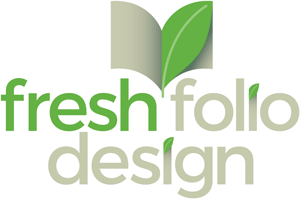Today, we want to share some of our tips around what to do when working with low-quality images. Obviously, it would be great if every image you worked with was taken by a professional photographer, well lit, and perfectly composed.
However, the truth is that sometimes that won’t be the case, but…
What if you had a set of tools to redeem even the most unfortunate of photos?
Over the years, we have identified a few techniques that can really help when working with less-than-ideal photography. In fact, we have had clients sheepishly pass along photos for a project as if they were half-eaten leftovers, and after seeing what we had done, comment that it didn’t even seem like the same photos.
We’d like to share some of our go-to solutions, but before we dive in, we thought it would be fun to share some of the photos that we have actually received from clients over the years.
 Now this photo would have been great, if the article was about fire hydrants; however, considering it was accompanying a story about a building expansion, the fire hydrant is coming across as a bit of a diva.
Now this photo would have been great, if the article was about fire hydrants; however, considering it was accompanying a story about a building expansion, the fire hydrant is coming across as a bit of a diva.
 Aside from the fact that the photo is out-of-focus, the sign is not even readable. We spent a little time trying to identify what the sign was saying, but all we could come up with was “Raptors Test”. However, that may have been due to the fact that we had dinosaurs on the brain after a recent rewatching Jurassic Park.
Aside from the fact that the photo is out-of-focus, the sign is not even readable. We spent a little time trying to identify what the sign was saying, but all we could come up with was “Raptors Test”. However, that may have been due to the fact that we had dinosaurs on the brain after a recent rewatching Jurassic Park.

Aside from the director blending with the background like a 12-year old at a school dance, it truly is a very unfortunate cropping for the back row musicians.
OK… that’s enough of the parade of misfit photos. Let’s take some time to look at actual solutions you can use when working with poor quality photos.
Off Color
Sometimes you will be given a photo and it isn’t a matter of poor composition, but the overall color and look of the photo screams amateur snapshot. In those cases you may want to consider converting the image to grayscale or duotone. Grayscale is when all color is removed, while duotone is simply an image that is made of two colors. Here’s an example of how that works.
 As you see in the original photo, the composition isn’t too bad, but between the green of the chess board, bright blue of the boy’s shirt and that red peaking out on the right, the color is very distracting.
As you see in the original photo, the composition isn’t too bad, but between the green of the chess board, bright blue of the boy’s shirt and that red peaking out on the right, the color is very distracting.
 By converting the color of the image, the colors are no longer distracting and, instead, the image now is focused on the subject of the photo; the two boys participating at the chess club.
By converting the color of the image, the colors are no longer distracting and, instead, the image now is focused on the subject of the photo; the two boys participating at the chess club.
Keep in mind that a duotone doesn’t always have to be simply black and another color. In fact, the current trend is using of using other pairs of color to create a duotone. This can be a great option when you are working with a specific color palette.
 Just look at how this duotone transforms the photo from it’s original mediocre mediocrity into a more dynamic photo just by converting the color.
Just look at how this duotone transforms the photo from it’s original mediocre mediocrity into a more dynamic photo just by converting the color.
A Bigger Bang For Your Buck
Have you ever found yourself needing to use an image, but it’s too small? What if we told you there is actually a way to increase the size of an image without any obvious distortion?
This handy little trick has saved us many times. However, we do want to clarify that this tip will not improve technical problems with a photo. Meaning, if you have an image that is out of focus or low-resolution, it won’t be magically transformed into a crisp, high-res photo.
However, in cases where you are working with an image and you wish it was just a little larger, this will absolutely do the trick. Working in Photoshop, go to the Menu bar and select Image > Image Size. This will bring up the Image Size Window.
Once there you want to select Resample > Bicubic Smoother. After you have selected Bicubic Smoother, it is important that the Width and Height is set to “Percent”.
Type “110” in the fields for the width and height. (If you have the link icon activated between those two fields you will only have to enter in one of them.)
Click OK, and the image will increase 110%. Repeat this process of entering “110” into the width and height until the photo has reached the required dimensions.
This technique will not noticably soften or blur the image. Instead, it retains the quality of the image pretty effectively, but proportionally increases the dimensions of the image.
We have used this solution to increase an image just a few times to accommodate a page layout, as well as increasing 20 times to use an image for a billboard. By incrementally enlarging the image, Photoshop is able to retain the quality of the image much more effectively than increasing the dimensions of a photo in one fell swoop.
In theory, you are only limited by the number of times you want to repeat the step. Of course, for those wanting to save a little time you can record this as an Action and assign a button on your keyboard to do this increase whenever you press it. (This can be very helpful in reducing carpal tunnel. Full disclosure — we are not medically trained.)
Fade the Image
The final tip we’d like to share is when an image has negative space that doesn’t really communicate anything. Below are two images that we were given.

 Each image has some challenges. In the case of the image of the man there is too much environment, while the other photo has almost half of it showing the bus behind the kids.
Each image has some challenges. In the case of the image of the man there is too much environment, while the other photo has almost half of it showing the bus behind the kids.
In both of these cases we could just crop the photo to only show the people, however, another option would be to fade the image and use it as part of the background.
Working in Photoshop you can adjust the image so that the unimportant portion of the image is lightened and simply fades to the background. There are a variety of ways that you can accomplish this and our recommendation would be to play with masks and gradient masks to discover effects that suit your purpose.
Here is a composite of the solutions we came up with. In both cases the portion of the image that isn’t important is reduced in opacity, while remaining subtly visible to give context for the main portion of the image.
 This approach can also be used for an entire image. People sometimes refer to this solution as watermark images, but it is basically fading an image so much that it is ghosted in the background.
This approach can also be used for an entire image. People sometimes refer to this solution as watermark images, but it is basically fading an image so much that it is ghosted in the background.
Also, designers sometimes choose to fade back an entire image when the photo does not have a specific focal point, but works to provide ambiance or set a tone. The only word of caution we would give regarding fading an image is to verify that any type you place on top of it is readable.
Hopefully, these tips provide ideas on how to address challenges you may encounter with photos. Remember, if you ever feel like the quality of images a client provides will compromise the end product, you want to voice those concerns early to determine if there are other options to pursue regarding photography.
However, for the times when the images you’ve been given are lacking, and there isn’t an option to pursue other solutions, we hope these tips will come in handy and result in your client praising your savvy design skills.







Leave a Reply